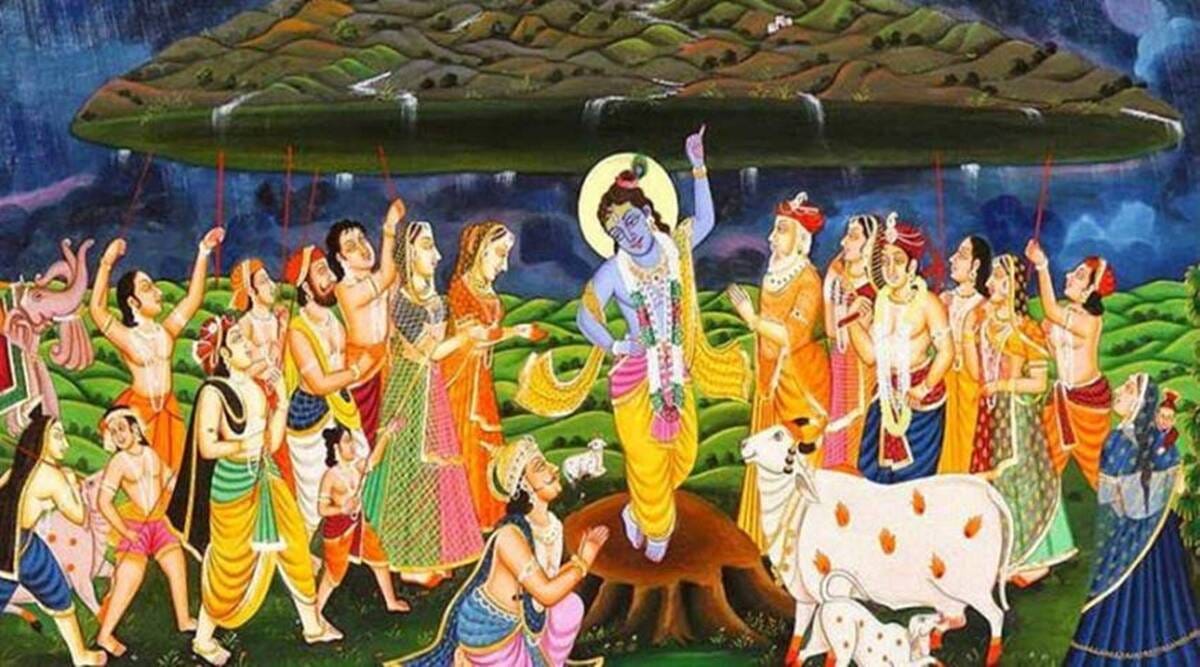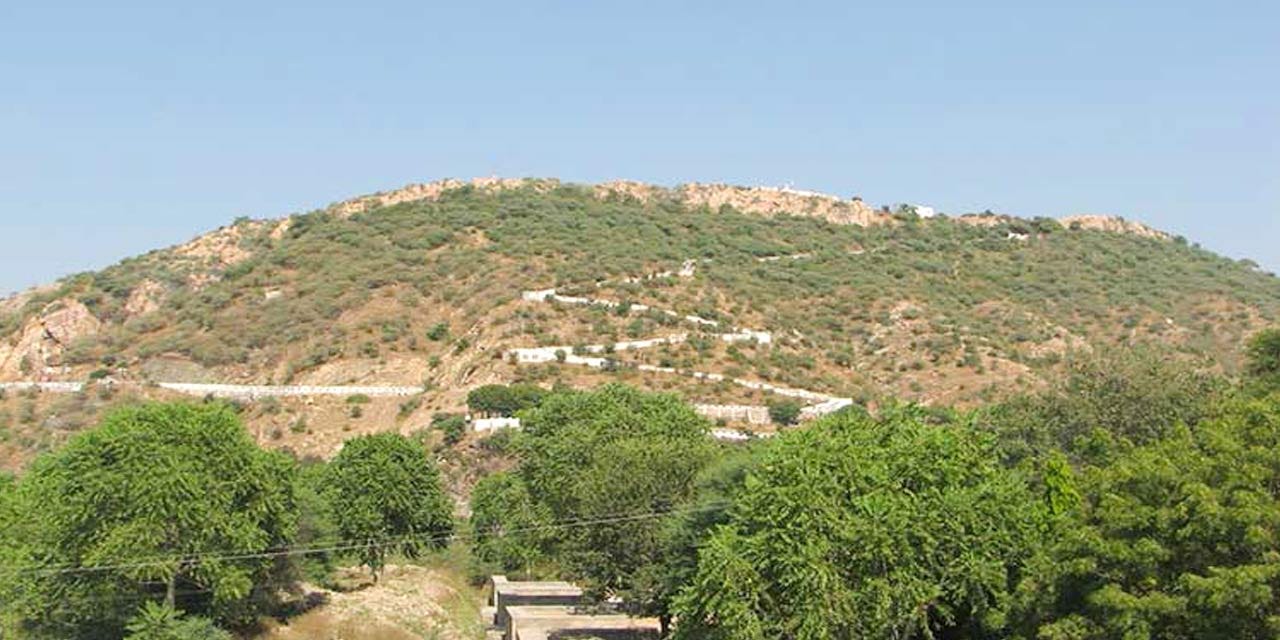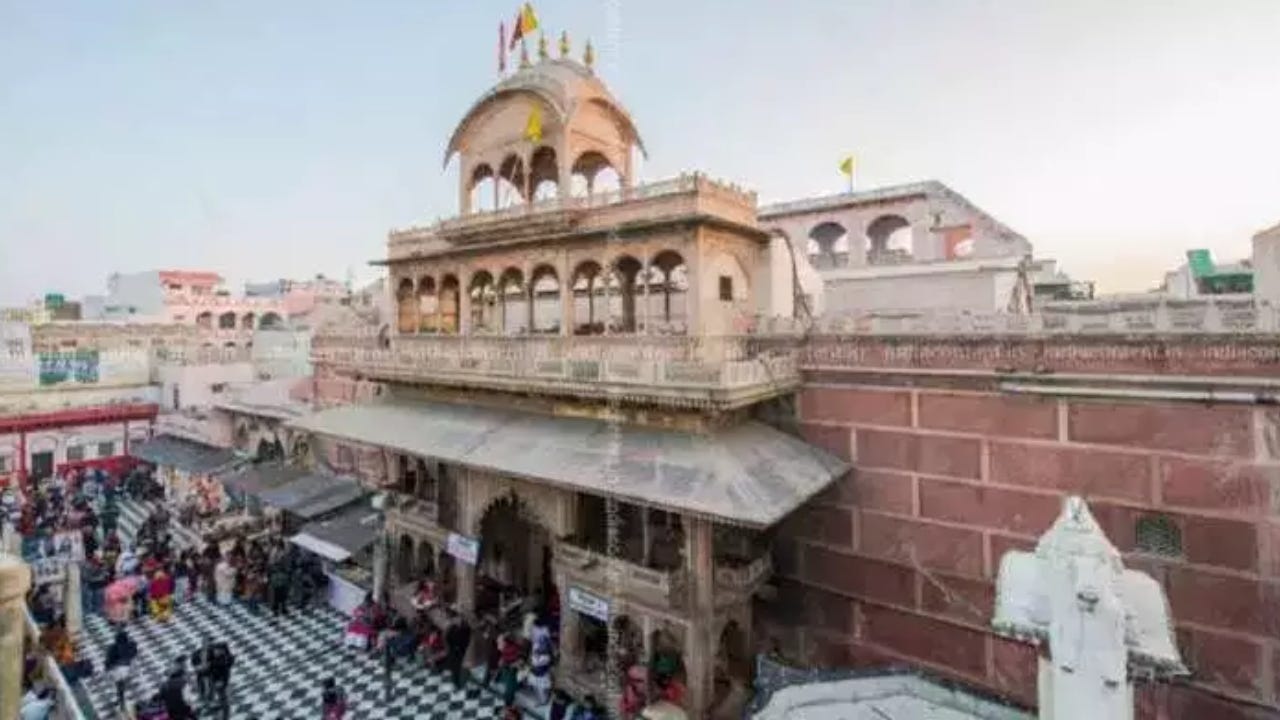Govardhan Puja and Lord Krishna: Celebrating Divine Harmony and Nature's Bounty
Normally celebrated the day following Diwali, this year it is being observed on Saturday November 2, aligning with the specific lunar 'tithi' (date) at dawn.
Lord Krishna's Challenge to Traditional Worship
On this auspicious occasion of Govardhan Puja, we extend our heartiest felicitations to all. This festival, deeply rooted in the sacred narrative of the Bhagavata Purana, celebrates a pivotal moment when Lord Krishna, revered as an incarnation of Lord Vishnu, challenged the traditional worship of Lord Indra, the god of rain. Instead, he urged the people of Vrindavan to honour Mount Govardhan and their cattle, recognising these as the true sources of their prosperity and sustenance. May this Govardhan Puja inspire us to appreciate the enduring bonds with nature and all that sustains us.
Indra's Wrath and Lord Krishna's Divine Intervention
This deviation from tradition angers Indra, who perceives it as a challenge to his authority. In retaliation, he unleashes a devastating storm on the village. Amidst this chaos, the young Krishna's divinity manifests as he lifts Mount Govardhan with his little finger, providing a shelter for the villagers and their animals. This act, lasting a week, showcases his immense power and the protective nature of his divinity.
Indra's Realization and Surrender
The festival reaches its spiritual climax with Indra's surrender. Upon witnessing Lord Krishna's miraculous actions and unwavering commitment to protect his devotees, Indra's anger subsides. He approaches Lord Krishna, offers his apologies, and acknowledges Lord Krishna's supreme power, signifying the victory of devotion and righteousness over pride.
The Festival of Gratitude and Reverence for Nature
Govardhan Puja, symbolizing divine protection and the triumph of humility over arrogance, is celebrated the day following Diwali. This year, it is being observed on November 2, aligning with the specific lunar 'tithi' (date) at dawn. Central to this festival is the preparation and offering of a diverse array of foods, collectively known as 'Annakut' or 'mountain of food'. This practice not only fortifies community bonds but also serves as a collective expression of gratitude for the abundance provided by nature.
Epicenter of Govardhan Puja Celebrations: Mathura and Vrindavan
The most grandiose and vibrant celebrations of Govardhan Puja are witnessed in Mathura and Vrindavan, in the Indian state of Uttar Pradesh. These areas, deeply rooted in Lord Krishna's life and legends, come alive with spiritual fervor during this festival. The Banke Bihari Temple in Vrindavan, in particular, stands out for its elaborate rituals and the magnificent display of the 'Annakut'. Devotees also flock to the Govardhan Hill, near Mathura, to perform the sacred Govardhan Parikrama, a ritual circumambulation that holds immense religious significance. The entire region transforms into a hub of devotion, showcasing a harmonious blend of spiritual practices and cultural festivities, attracting pilgrims and visitors from all corners to immerse in the unique aura of this auspicious occasion.
Current Celebrations and Rituals
Modern-day Govardhan Puja is celebrated with fervor, especially in Northern India, and includes:
Preparation of Annakut: A variety of vegetarian dishes are prepared as offerings to Krishna, symbolizing nature's abundance and gratitude for divine protection.
Worship of Govardhan Hill: Where natural hills are absent, devotees create replicas with cow dung or mud, which are then adorned and worshipped.
Circumambulation Rituals: Devotees perform Parikrama of these hills or their representations, paying homage to Krishna's divine act.
Cattle Worship: In line with Krishna's affection for cows, these animals are revered on this day. Rituals include bathing and adorning them, acknowledging their sacred status in Hindu culture and their centrality in the Govardhan Puja story.
Community Feasts: Following the worship, the prepared food is shared among the community. This act symbolizes the sharing of nature's bounty and reinforces community bonds, emphasizing the spirit of togetherness and collective celebration.
Philosophical and Cultural Significance
Govardhan Puja encapsulates key philosophical and cultural tenets of Hinduism. It underscores the importance of nature and its preservation, reflecting a profound respect for the environment. The festival also highlights virtues such as humility and the surrender of ego, exemplified by Indra's realization and apology. Moreover, it strengthens community ties, underlining the significance of sharing and collective celebrations in Indian culture.
Summing Up: Beyond Religious Observance
In essence, Govardhan Puja transcends mere historical or religious observance. It is a day that embodies various aspects of Hindu philosophy and cultural values, reminding devotees of the intricate interplay between the divine, nature, and human society. It is a festival that reverberates with themes of respect for nature, humility before the divine, and the importance of community, resonating deeply within the broader context of Indian spirituality and life.
EPILOGUE
Divine Intervention - From Vrindavan to Modern Delhi: A Message Revisited
As we revisit the tale of Govardhan Puja this year, reflecting on Lord Krishna's divine intervention in Vrindavan against Indra’s furious rains, a powerful parallel unfolds once again in our contemporary lives. Last year, the narrative inspired us to contemplate our impact on the environment; this year, we see signs that some lessons may indeed be taking root. In Delhi, though the pollution levels still leave much to be desired, there is a noticeable shift – the city’s residents, by and large, refrained from bursting crackers, offering a glimmer of hope for cleaner celebrations ahead.
This transformation beckons us to take to heart Lord Krishna’s timeless message to cherish, even worship, our environment – as Gurbani reminds us, Pawan Guru, Pani Pita, Mata Dharat Mahat (Air is the teacher, water the father, and earth the revered mother). May we continue to grow wiser, honouring the essence of Govardhan Puja by preserving our natural world, fostering a commitment to safeguard the very elements that sustain us. Perhaps, by next year, we will draw closer to realising a cleaner, healthier environment, a testament to both tradition and progress.







Thanks for thought privoking 'Philosophical and Cultural Significance' of Gocerdhan Pooja.
If Lord Krishna ( who personifies end all and beginning of universe ) inculcated a sense of sanity in no less than Indra, there is no reason Krishna's benovelace will not coax us to emancipation from modren day pollution. Environmentalists ( including you ) are up in arms with collective consciousness to fight polluters.
I think blaming Delhi pollution only on crackers makes little sense. Look at other polluted cities of world, Lahore, Beijing, Dhaka on the same day. There were no fire-crackers in these cities. A myopic view of the problem is the reason why it has not been resolved so far.